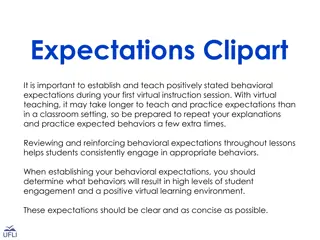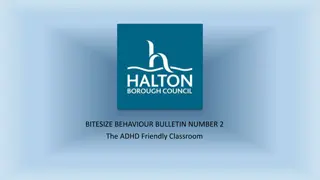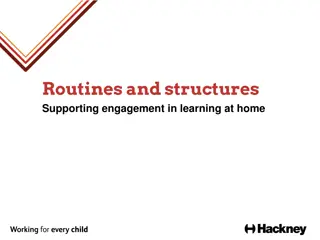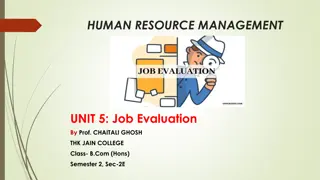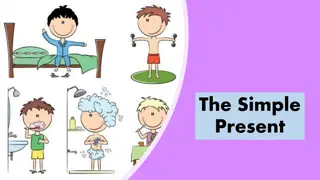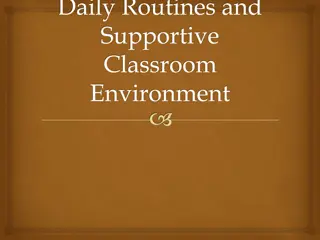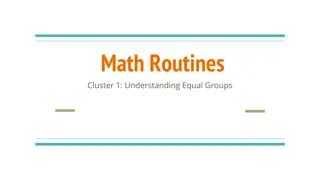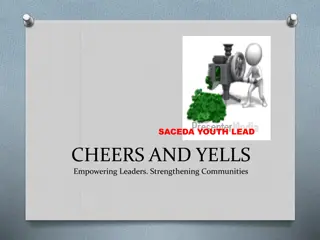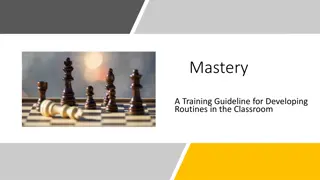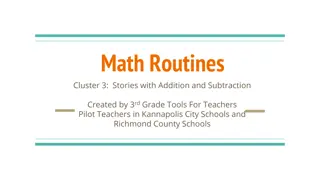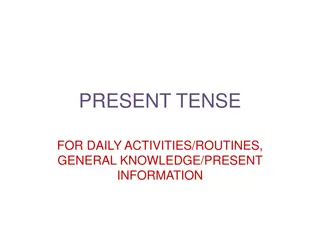Establishing Effective Learning Routines and Structures at Home
Routines and structures play a crucial role in supporting engagement and learning at home. They provide reassurance, aid in setting expectations, offer motivation, and enhance overall learning experiences. Tools like visual timetables and 'Now and Next' boards help establish these routines effectively. Understanding the importance of routines and structures can significantly contribute to a more organized and engaging learning environment for children.
Download Presentation

Please find below an Image/Link to download the presentation.
The content on the website is provided AS IS for your information and personal use only. It may not be sold, licensed, or shared on other websites without obtaining consent from the author. Download presentation by click this link. If you encounter any issues during the download, it is possible that the publisher has removed the file from their server.
E N D
Presentation Transcript
Routines and structures Supporting engagement in learning at home
Aims for the session 1. Why are routines and structures so useful for learning? 2. What are some of the tools used to help establish routines and structures in school? 3. How can you use these tools at home to establish your own routines and structures?
Why are routines and structures so important? Reassurance Routines and structures help to make the day a bit more familiar and predictable. Familiarity and predictably are key features of our day that help keep us feeling settled, secure and safe. Routines and structures are also what your child will be use to so they will help to bring a sense of normality Support Learning can be stressful and these uncertain times don t help. When were stressed we can find it harder to organize and process information and the consistency and comfort of routine or structure could support your child to engage more effectively new or challenging tasks. Motivation Adding fun bits into a routine can help us find the motivation we need to get through the trickier bits Setting expectations Rather than having a debate at dinner time about who has the job to set the table, if it s written in someone s timetable then they ll know that it s their job and they may be more prepared to do it
Routines and structures Daily visual time table A visual timetable is a way of showing a routine through pictures and/or words. Their visual nature helps the child to quickly understand what's happening and what's expected of them through the day. As each activity or task is completed the child can remove it from the wall or tick it off. This can provide lots of satisfaction and motivation. A couple of things to consider when putting your time table together at home could be The duration of the task A reasonable attention span to expect of a child is two to three minutes per year of their age. That's the period of time for which a typical child can maintain independent focus on a given task. The type / timing of the task What tasks or subjects does your child find most tricky? Which tasks does your child find most exciting or motivating? When is your child most tired? Have they had had a chance to run about?
Routines and structures of school Now and next Now and next boards can help break daily routines down into smaller more manageable steps. Using a Now and Next board can help the child to understand what is going to happen next, which can reduce anxiety, support the transitions between activities and add motivation, epically if the child can see something fun coming up next. They can also support children and young people to be more independent in tasks and routines
Routines and structures Task Plans 0 9 3 0 0 9 0 0 Task plans provide additional structure to individual tasks. They help to break down tasks into manageable chunks, this often helps to child to better engage in the task because Write the date and title The child knows how many steps a task contains and in what order to carry them out Read the first paragraph on your worksheet The child s planning and sequencing skills are supported and practiced They know how much time they need and can see where the task will end Answer questions 1,2,3 and 4 They can start to build some independence with their work and rely less on an adult to tell them what to do next It s very satisfying to cross something off your to-do list! It gives the child a sense of accomplishment Use the I pad!









